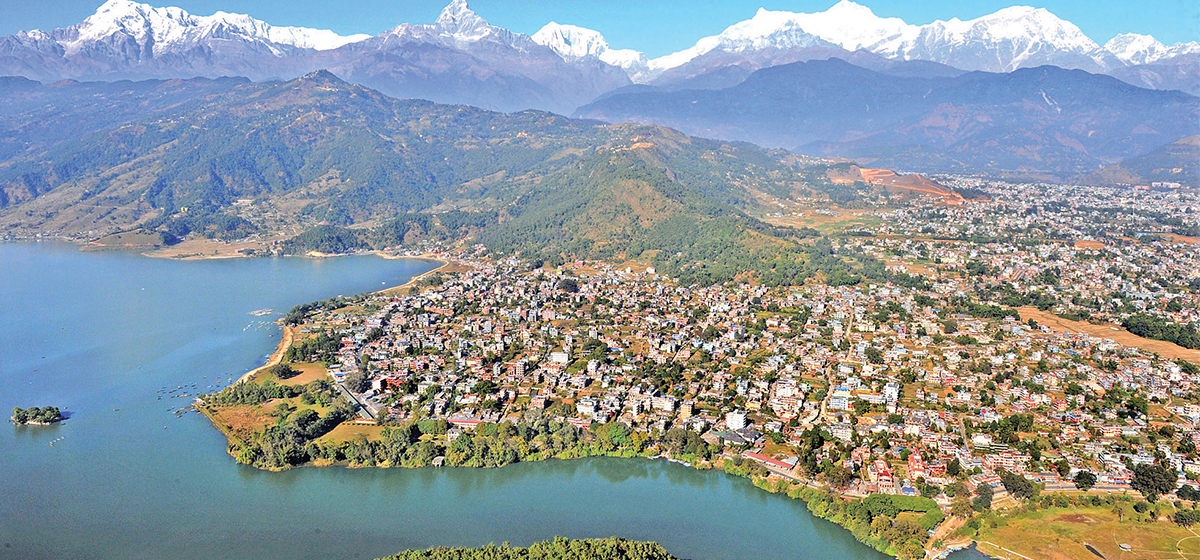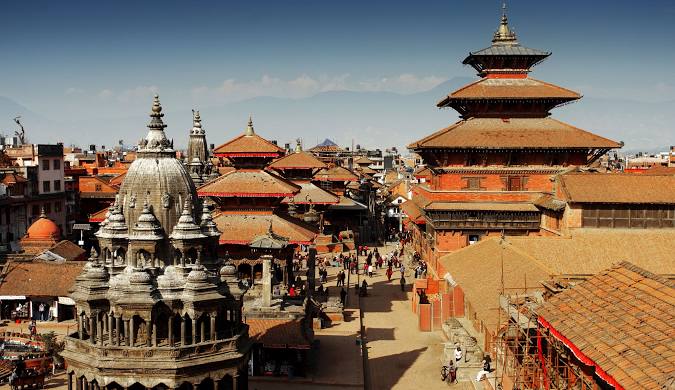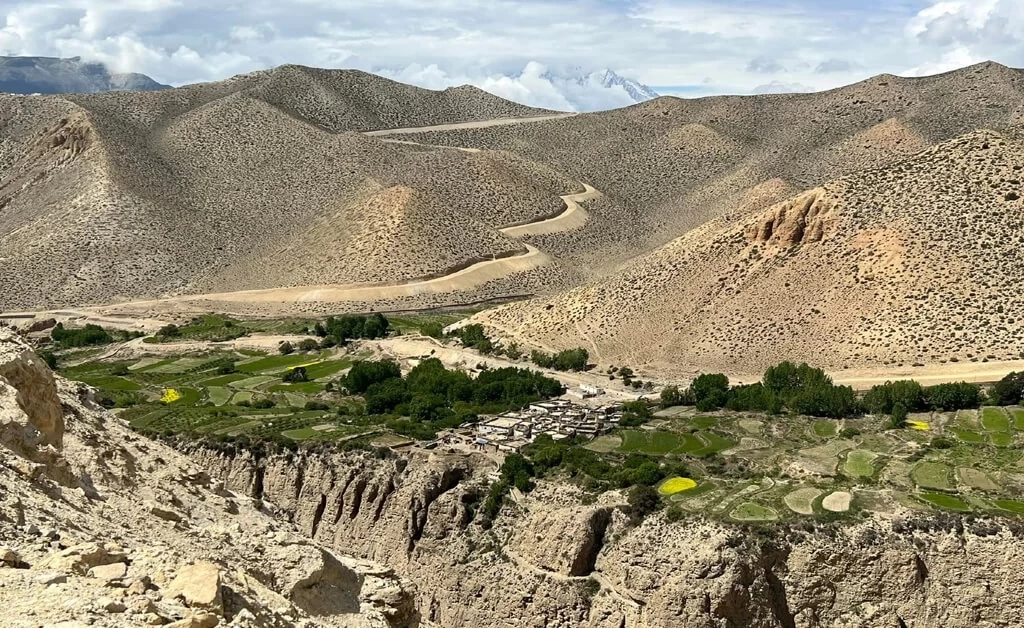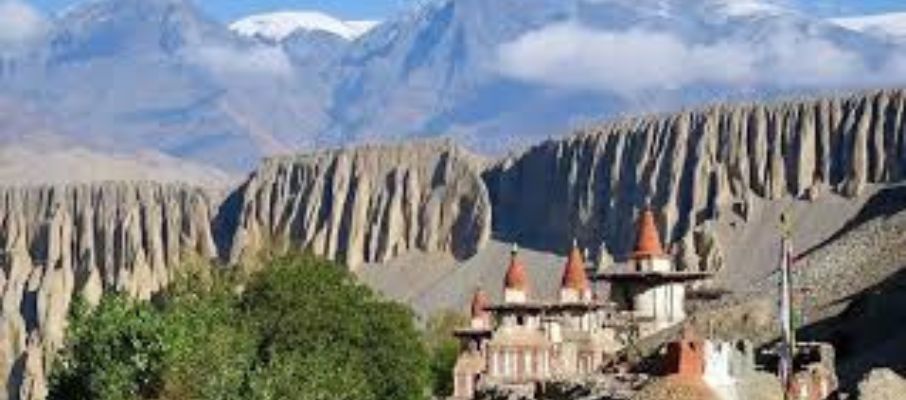
Pokhara Tour
-
Activities
Sunrise at Sarangkot Boating on Phewa Lake Visit to Devi’s Fall, Gupteshwor Cave Hiking to World Peace Pagoda Sightseeing and Lakeside exploration
-
Transportation
Private,Public vehicles, Plane
-
Group Size
4–12 People
-
Trip Duration
3 Days / 2 Nights
Image
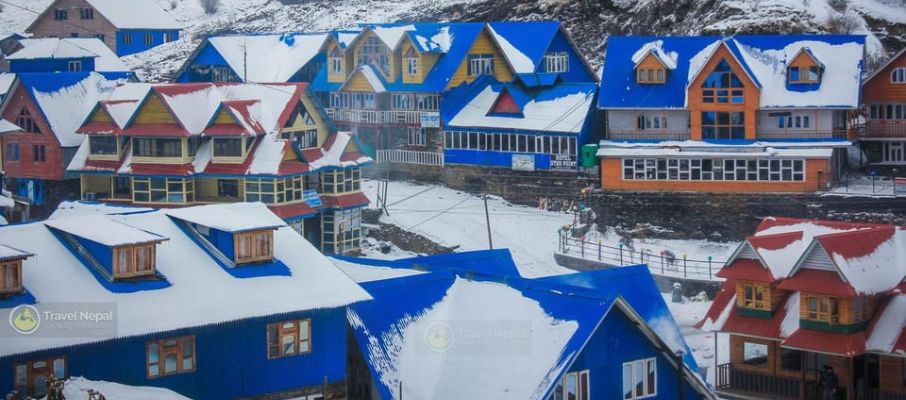
Description
Geographically located in the middle of the Western Development Region of Nepal, Pokhara is an interesting portal to Nepal's lofty Himalayas and the country's most popular tourist resort after Kathmandu. Picturesque Lake City, at a height of 822 meters, is the zenith of nature splendor, adventure sports, and cultural heritage, inviting tourists from all over the world. Three of the top ten highest mountains in the world, namely Mount Dhaulagiri, Mount Annapurna I, and Mount Manaslu, can be seen from here. Similarly, the scenic Mount Machhapuchhre (Sacred Mount Fishtail) is merely 50 km from the city and is also close to Pokhara. "Nepali for 'lake' is 'City of Pokhara,' and worth it at that, with its breathtaking Phewa Lake as its crowning glory. Ringed by the giant mountains of the Annapurna range, Pokhara is a scenery so beautiful unmatched it has captivated adventure-seekers, mystics, and nature-enthusiasts in the thousands." Its perspective provides the most breathtakingly lovely views of mountains, a paradise for photographers, and an abode of peace for people who would like to surround themselves with nature's glory. Besides its beauty in nature, Pokhara is the gateway to one of the world's most famous trekking trails, the Annapurna Circuit and Annapurna Base Camp trekking trails. It is also famous for an adventure zone like White Water Rafting, the start and end point of renowned trekking routes, Paragliding, Jungle Safari, the peacefulness of Lakes, a bird's eye view of the Annapurna range, Machhapuchhre, and Dhaulagiri Range. The unfussy nature of the city, together with the infrastructure of international-standard adventure sports, makes the city perfect for adventure enthusiasts and those individuals who are also able to relax. Whether you are going to take the tough Himalayan trek or just relax in the tranquility of lake life, Pokhara will offer it all. The perfect combination of nature, adventure, and Nepali hospitality places an imprint on your heart which welcomes you again and again to this magical land.
Why visit Pokhara?
1. Spectacular Mountain Views
Pokhara offers some of the most breathtaking mountain vistas in the world, with clear views of the Annapurna range, Dhaulagiri, and the iconic Machhapuchhre (Fishtail Mountain). Sunrise views from Sarangkot are particularly spectacular, with a golden panorama of snow-capped mountains that will take your breath away.
2. Adventure Capital of Nepal
Paragliding, zip-flying, boating, and Canoeing are included in the Pokhara tour. Pokhara is the adventure capital of Nepal and has something for all of them, from paragliding over the Phewa Lake to bungee jumping and zip-line flying. 3. Serene Lake Experience The tranquil Phewa Lake, whose surface sparkles with crystal purity in front of the towering mountain ranges surrounding it, is a tranquil oasis amidst the city’s frenzy. An evening cruise across the lake is one that best describes Pokhara's mind.
4. Rich Cultural Heritage
Visit ancient temples, gorges, and villages that are testaments to Nepal's rich history. Syncretism among Hindu and Buddhist cultures is the secret to the distinctive spiritual ambiance infusing depth into your experience.
5. Perfect for All Ages
Unlike high-altitude treks, Pokhara's comparatively low altitude and welcoming climate are accessible to all ages and health, and ideal for a family holiday.
6. Gateway to the Himalayas
Pokhara is a laid-back taste of Nepali hill existence and proximity to some of the world's best-known trekking routes, with a blend of Himalayan life minus the exercise of trekking at high altitude.
Your Pokhara adventure begins with a 6–7-hour drive from Kathmandu or a 25 minute domestic flight with beautiful bird's-eye Himalayan views. You are greeted at the airport and taken to your mid-range Phewa Lake and Himalaya-view lakeside hotel.
After checking in and enjoying your first proper Nepali lunch, take your first walk along trendy Lakeside. A vibrant holiday town along the lake shore, with its colorful shops, cafes, and eateries, it's a lively quarter. Take a walk along the promenade of the lake, shop for handicrafts, and soak up the easy-going atmosphere Pokhara is so renowned for.
Afternoon: Unwind on the peaceful boat tour to Phewa Lake, Nepal's second largest body of water. Paddle close to the two-storied Tal Barahi Temple, a pagoda temple on the lake's smallest island. Hindu Goddess Durga temple is a place for worship and has good photography with the backdrop of the Annapurna range.
Sunset and lakeside dinner in one of the lakeside restaurants with your loved one. Distant mountains mirrored on calm water create a fantasy world ambiance, which stereotypically colors your Pokhara experience.
Start your day early morning by going for the morning tour of Sarangkot, one of the most popular viewpoints of Nepal. Sarangkot, which is located at 1,592 meters, is famous for the sunrise behind the Annapurna range of mountains, namely Annapurna I, II, III, IV, Dhaulagiri, Manaslu, and the beautiful Machhapuchhre. Sunrise behind snowy mountains is an eye treat that nobody would ever like to miss.
After breakfast with a view, return to Pokhara and visit the famous Devi's Fall (Patale Chhango), a unique waterfall that disappears into an underground tunnel. Although monsoon is the peak season to observe it, the enigmatic aspect of it intrigues throughout the year. The fall is named after a Swiss tourist, Devi, who lost her life on the spot when she slid down into the falls in a fatal accident.
And then visit the Gupteshwor Cave, the religious cave on the opposite end of Devi's Fall. The temple of Lord Shiva lies within a limestone cave with exquisite stalactite formations. The tunnel and rooms below the cave give a below-ground experience, with the highlight being the view of Devi's Fall on the ground level.
In the afternoon, visit the Seti River gorge and view the milk-white river water flowing through a hard, narrowing gorge. The river has been stained by limestone and glacial rock that it once carried from the upper mountains within the Himalayas.
Begin the final day with a serene hike to the World Peace Pagoda (Shanti Stupa) at the top of the south bank of Phewa Lake. The white stupa of the Japanese Buddhist monastery offers a panorama of Pokhara Valley, Phewa Lake, and the Annapurna range. The hike would take 1-2 hours, and that would be the perfect time to get some photos and unwind.
Peace Pagoda, constructed as a peace symbol and one of the 80 constructed across the world, is stunning Buddhist architecture with several decks where individuals meditate. Sit here for some time and relax and think about your life and imbibe the calm atmosphere and nature.
After a stroll near the Peace Pagoda, one is recommended to go to the International Mountain Museum since it provides insight into Nepalese mountaineering and Himalayan climbers. The museum takes pride in world-renowned mountaineers, the Himalayan landscape, and the Himalayan culture.
Afternoon excursion to a nearby Gurung village to observe the villagers' life and hospitality. Look at life in the mountains right before your eyes, see the handicrafts being made in their traditional way, and experience Nepali lunches being made by the local families. An insight into the day-to-day life of the people dwelling at the foot of the Himalayas is given on the tour.
Conclude your tour with a final evening by Phewa Lake, where you can enjoy a farewell dinner while watching the sunset reflect off the water. Depart the next morning with memories of an incredible journey through one of Nepal's most beautiful destinations.
Inclusion
• 2 nights' lakeside hotel/lodge stay with a mountain view
• All Nepali and continental meals (breakfast, lunch, dinner)
• Private car transfers for complete sightseeing
• Complete the trip professional English-speaking tour guide
• Boat trip to Phewa Lake and Tal Barahi Temple visit
• Sarangkot sunrise view trip with transportation
• Devi's Fall, Gupteshwor Cave, and World Peace Pagoda entrance fee
• World Peace Pagoda Hike with an experienced local guide
• International Mountain Museum tour
• Local guide-led cultural village tour
• Government tax and service charge
• Airport/ bus station pick-up and drop-off facility
• First aid kit facility and rescue service in case of any activity
• Travel insurance for all activities
Exclusion
• International airfare and Nepal visa fee
• Domestic flight from Pokhara to Kathmandu (if the flight package option is chosen)
• Shopping, laundry, phone calls, and internet personal expenses
• Food and alcoholic drinks with meals
• Paragliding, bungee jumping, and zip-lining are adventure sports
• Tips for guides, drivers, and hoteliers • International travel policy insurance
• Medical and evacuation costs in case of necessity
Best Time to Visit Pokhara
Peak Season (September to November)
The best time to go to Pokhara is September-November, or the tourist season. It offers the best scenery of mountains, calm weather, and pleasant temperatures of 15-25°C. Clear monsoon offers the best view of the Himalayan ranges, best for photography and sightseeing.
Winter Season (December to February)
The winter season in Pokhara is December, January, and February. It's okay during the day with clear skies, and night temperatures are 5-10°C. Best for people who prefer cold climates and have fewer tourist groups, but require warm morning clothing.
Spring Season (March to May)
March, April, and May are mid-season increase in temperature, rhododendrons in lower areas, and generally fine weather are their characteristics. A trip to Pokhara during the peak season would probably be April to May or October to November, when there won't be any heavy rain, and climatic conditions will be perfect.
Monsoon Season (June to August)
Monsoon is intense rain and clouds, but with bad mountain visibility. Visibility is green and dense, but weather can be managed to a certain extent. It is ideal for mountain viewing and trekking holidays.
Activities to Do in Pokhara
Adventure Activities
• Paragliding: Fly over hills and the city on tandem flights from a birds-eye perspective over Phewa Lake
• Bungee Jumping: Feel the rush of bungee jumping off a 160-meter suspension bridge
• Zip-lining: Soar high up in the sky on the world's longest zip-line • White Water Rafting: Have thrilling rapids on the Seti River
• Ultralight Aircraft: Panoramic flight over the Annapurna massif
Nature and Sightseeing
• Begnas Lake: View this peaceful lake, perfect for boating and swimming • Rupa Lake: Visit this unspoiled lake, renowned for its peaceful atmosphere
• Mahendra Cave: View the ground-level limestone outcrop of this natural cave
• Bat Cave: Feel the unique atmosphere of this natural underground cave
• Bindhyabasini Temple: Witness this important Hindu temple of Goddess Durga
Cultural Experiences
• Gurung Village Tours: Witness life as the mountain people live
• Tibetan Refugee Camps: Witness a part of Tibetan life and purchase authentic handicrafts
• Local Cooking Classes: Learn to prepare traditional Nepali dishes
• Meditation and Yoga: Unwind in serene natural surroundings
Packing List for Pokhara
Clothing
• Good grip, trekking shoes
• Light, loose casual wear
• Warm clothing during mornings and evenings (winter, particularly)
• Rain jacket or waterproofs
• Sun hat, sunblock, sunglasses
• For the lake: swimming costumes
Essential Items
• Sunscreen lotion with high SPF, sun protection
• Outdoor insect repellent
• First aid kit and personal medicine
• Camera with extra batteries and memory cards
• Binoculars for mountain viewing and bird watching
• Headlamp or flashlight for early morning activities
• Reusable water bottle
• Nepali rupee cash for local expenditure
Optional Items
• Trekking poles for hiking activities
• Travel charger to charge other devices
• A notebook and pen for journaling
• Snacks for hiking and long activities
• Damp or dirty clothes, plastic bags
• Wet wipes and hand rub
Tips for Visiting Pokhara
Transportation Tips
• Book a local flight in advance, particularly during the season, due to weather conditions.
• Mountain view can be taken as a second option by traveling by road, but use extra time for traveling.
• City rickshaw and taxi local the city limits can be used for city limits for short distances of travel.
• Rent a bicycle and ride to the lakeside in an eco-friendly manner.
Health and Safety
• Drink filtered water or bottled water to prevent stomach disease
• Take altitude pills while going for a high-altitude adventure
• Inform guide in case of physical disability or health problems
• Keep emergency phone numbers with you
• Purchase travel insurance for adventure sports
Cultural Aspects
• Dress modestly when going to temples and religious sites
• Remove your shoes while entering the temple and houses
• Ask for permission before photographing locals
• Learn a few basic Nepali phrases to communicate with locals
• Be respectful of the local culture and customs
Photography Guide
Best Photo Locations
Golden hour at Sarangkot is perfect for taking the best mountain photos with the Annapurna ranges and Machhapuchhre providing the best silhouettes against the rising sun. Phewa Lake provides the best mountain reflections, especially during calm morning and evening hours when there is flat water on the surface of the lake.
Equipment Recommendations
Take a wide-angle lens to get sweeping mountain panorama views and a telephoto lens for close-up shots of the distant summits. Take a polarizing filter to eliminate lake glare and create a sky-mountain contrast. Take spare batteries since cold pre dawn mornings drain them in no time, in a hurry.
Photography Etiquette
Always ask for permission first when taking a photo of natives, especially villagers and church attendees. Photography comes with additional fees in some temples and caves, too, so ask beforehand. Flash photography is not allowed at all during religious ceremonies and inside religious structures.
Sustainable Tourism Practices
Environmental Responsibility
Select those hotels that are environmentally friendly and incorporate green technology in the form of solar power, rainwater harvesting, and recycling. Avoid single-use plastics by taking a reusable bag and water bottle with you. Be compassionate to animals and do not indulge them by skipping wildlife tours.
Support Local Communities
Purchase souvenirs from the locals and eat at family restaurants to try to offer economic aid. Overstay as a tourist in family hotels and use a local tour business rather than foreign chains. Engaging in community-based tourism is beneficial to the local families and protects traditional cultures.
Cultural Preservation
Study local traditions and customs prior to visiting monasteries and holy towns. Respect photography restrictions and dress modestly while visiting monasteries and temples. Use local guides who will more accurately describe the history and culture of the region.
Conclusion
Your Pokhara Tour with Irish Travels and Tour promises to be a transformative journey that showcases the very best of Nepal's natural beauty, cultural richness, and warm hospitality. From the golden morning sunlight falling on the Annapurna Mountain ranges to the peaceful boat ride on Phewa Lake, everything is so well planned to make an impression in time for eternity. Avail the best of sightseeing, culture, and relaxation that this 3-day, 2-night package tour has to offer, and make this package just right for all kinds of tourists. Our dedication to quality does not end with activity management – we also give back to local communities, employ certified local guides, and inject the highest degree of safety and comfort into your vacation. On our Pokhara tour, you're not just looking at an area – you're taking part in sustainable travel that contributes to the locals and ensures Nepal's natural and cultural heritage for generations to come. We are sufficiently small to give us the luxury of being able to provide you with personalized service and a smaller carbon footprint, thereby making you feel more comfortable with this mystical land. Book your Pokhara Tour with Irish Travels and Tours today and embark on an unforgettable journey to one of the world's most beautiful destinations. Join and travel with us to the rural countryside's stunning natural beauty, rich history, and as-yet-unknown adventure sport of the very heart of Nepal. Contact us now to reserve your spot and prepare for an experience that will leave you with a lifetime of cherished memories and a deep appreciation for the natural wonders of the Himalayas.
